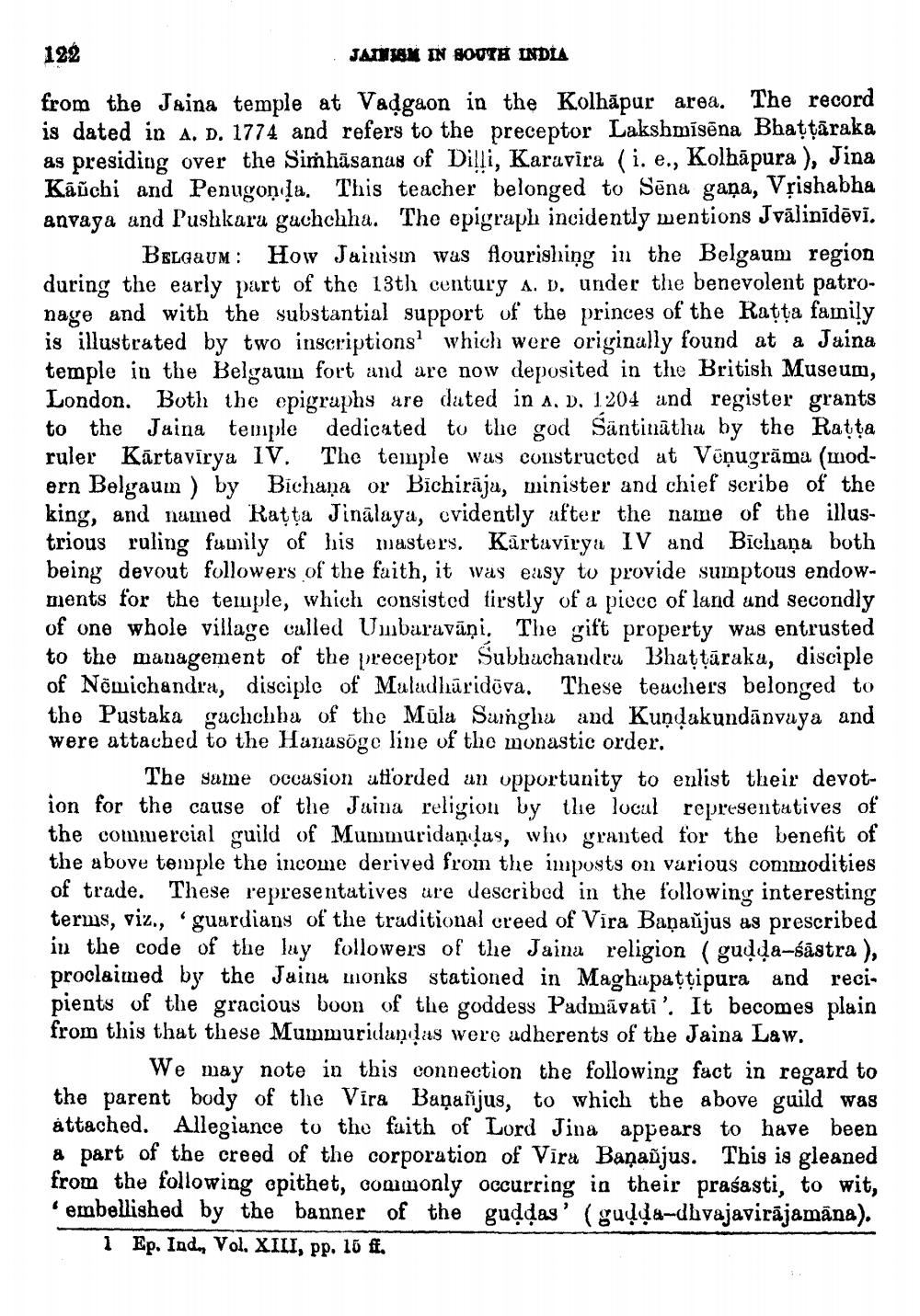________________
122
JAINISM IN SOUTH INDIA
from the Jaina temple at Vadgaon in the Kolhapur area. The record is dated in A. D. 1774 and refers to the preceptor Lakshmisena Bhaṭṭāraka as presiding over the Simhasanas of Dilli, Karavīra (i. e., Kolhapura), Jina Kanchi and Penugonda. This teacher belonged to Sena gana, Vṛishabha anvaya and Pushkara gachchha. The epigraph incidently mentions Jvālinīdēvi. BELGAUM: HOW Jainism was flourishing in the Belgaum region during the early part of the 13th century A. D. under the benevolent patronage and with the substantial support of the princes of the Ratta family is illustrated by two inscriptions' which were originally found at a Jaina temple in the Belgaum fort and are now deposited in the British Museum, London. Both the epigraphs are dated in a. D. 1204 and register grants to the Jaina temple dedicated to the god Śantinatha by the Ratta ruler Kartavirya IV. The temple was constructed at Venugrama (modern Belgaum) by Bichana or Bichiraja, minister and chief scribe of the king, and named Raṭṭa Jinalaya, evidently after the name of the illustrious ruling family of his masters. Kartavirya IV and Bichana both being devout followers of the faith, it was easy to provide sumptous endowments for the temple, which consisted firstly of a piece of land and secondly of one whole village called Umbaravāņi. The gift property was entrusted to the management of the preceptor Subhachandra Bhaṭṭaraka, disciple of Nemichandra, disciple of Maladharidēva. These teachers belonged to the Pustaka gachchha of the Mula Samgha and Kuṇḍakundanvaya and were attached to the Hanasoge line of the monastic order.
The same occasion afforded an opportunity to enlist their devotion for the cause of the Jaina religion by the local representatives of the commercial guild of Mummuridandas, who granted for the benefit of the above temple the income derived from the imposts on various commodities of trade. These representatives are described in the following interesting terms, viz., 'guardians of the traditional creed of Vira Baṇañjus as prescribed in the code of the lay followers of the Jaina religion (gudda-sastra ), proclaimed by the Jaina monks stationed in Maghapaṭṭipura and recipients of the gracious boon of the goddess Padmavati'. It becomes plain from this that these Mummuridandas were adherents of the Jaina Law.
We may note in this connection the following fact in regard to the parent body of the Vira Baṇañjus, to which the above guild was attached. Allegiance to the faith of Lord Jina appears to have been a part of the creed of the corporation of Vira Banañjus. This is gleaned from the following epithet, commonly occurring in their prasasti, to wit, ' embellished by the banner of the guddas' (gudda-dhvajavirājamāna).
1 Ep. Ind., Vol. XIII, pp. 15 f.




